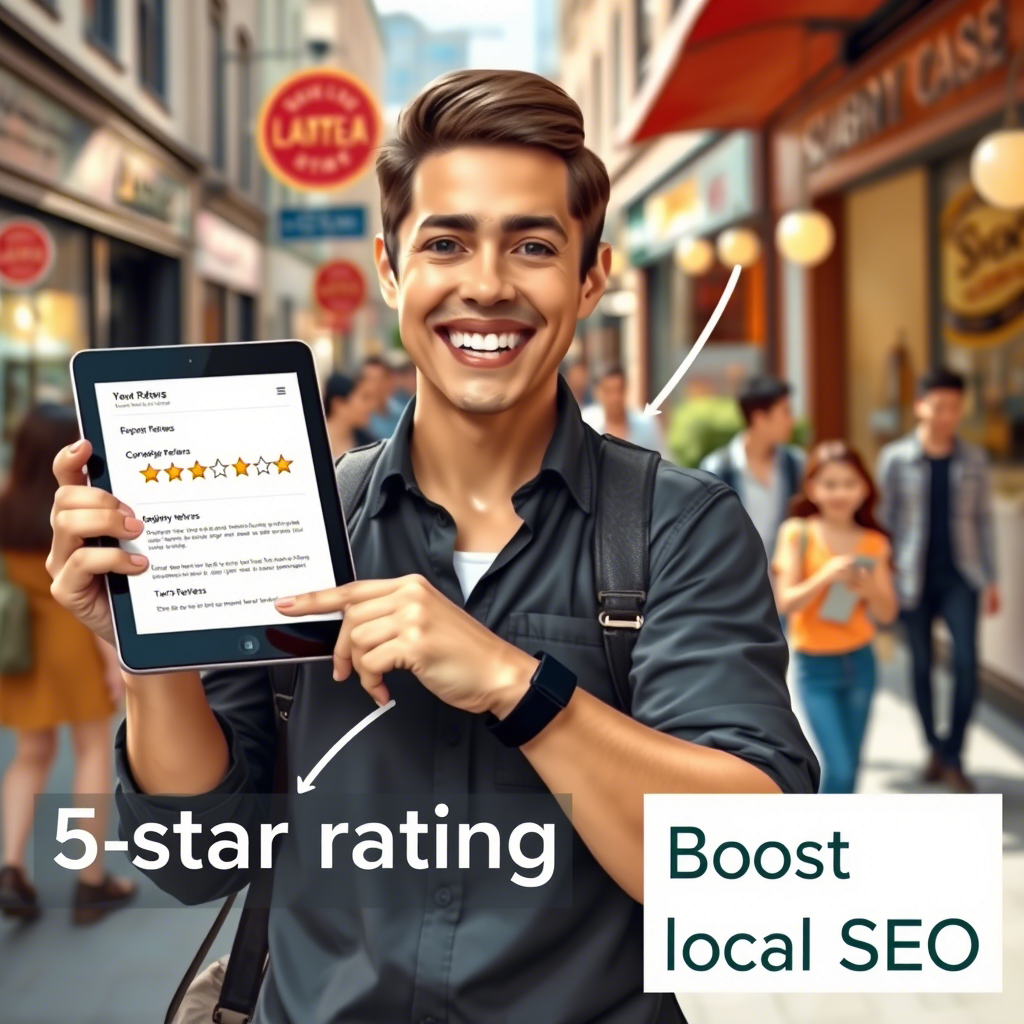In today’s digital age, customer reviews are more than just a way for businesses to showcase their reputation—they’re a powerful tool that can significantly boost local search rankings. Imagine this: you’re searching for the best pizza place in your area, and two options pop up on Google Maps.
One has an average rating of 4.7 stars with over 200 glowing reviews, while the other has a single review from three years ago. Which one do you choose?
The answer is clear, right? But what many business owners don’t realize is that those positive reviews don’t just influence consumer decisions; they also play a crucial role in how search engines rank local businesses.
In this article, we’ll explore why customer reviews matter so much, how they impact local SEO, and practical strategies to encourage and manage them effectively.
So, whether you’re running a small coffee shop or a bustling restaurant, understanding the power of customer reviews could be the key to outranking your competitors online. Let’s dive in!
Why Customer Reviews Matter in Local SEO
Customer reviews have become a cornerstone of trust in the online world. For local businesses, these reviews serve as social proof—a psychological phenomenon where people look to others’ actions to guide their own decisions. But beyond influencing potential customers, reviews directly affect your local search ranking through algorithms like Google My Business (GMB). Here’s how:
- Relevance : Search engines prioritize businesses with recent, relevant, and frequent reviews. This signals to Google that your business is active and valued by its community.
- Trustworthiness : Positive reviews improve your overall GMB profile quality, which contributes to higher visibility in local searches.
- User Experience : High-rated businesses tend to appear at the top of local pack results because users are more likely to click on them, improving engagement metrics.
For instance, consider a study by BrightLocal, which found that 85% of consumers trust online reviews as much as personal recommendations. If most of your competitors neglect their review strategy, you already have a competitive edge just by encouraging satisfied customers to leave feedback.
As we move forward, let’s discuss actionable ways to leverage these insights.
Encouraging Customers to Leave Reviews
Now that you understand the importance of reviews, it’s time to focus on gathering them. However, simply asking isn’t enough—you need to create a seamless process that makes leaving a review convenient and rewarding for your customers. Below are some proven methods:
Make It Easy
The easier it is for someone to leave a review, the more likely they are to follow through. Include direct links to your Google My Business page in email receipts, SMS messages, or even printed receipts. You can also display QR codes in-store that lead directly to your review page.
Timing Is Everything
Ask for reviews when your customers are happiest—right after they’ve had a great experience. For example, if you run a spa, send a thank-you note immediately after their appointment, inviting them to share their thoughts. Timing ensures that the memory of their excellent service is still fresh.
Offer Incentives (Within Limits)
While Google prohibits incentivizing reviews, you can offer non-monetary perks, such as entry into a monthly raffle for loyal customers who leave feedback. Just ensure compliance with platform guidelines to avoid penalties.
By implementing these tactics, you’ll start seeing an influx of valuable reviews that not only enhance your reputation but also strengthen your local SEO efforts.
Managing Negative Reviews Gracefully
No matter how hard you try, negative reviews may happen—and that’s okay! How you handle them can actually work in your favor. Responding professionally to criticism demonstrates transparency and accountability, traits that both consumers and search engines appreciate.
Here’s how to turn a potentially damaging situation into an opportunity:
Acknowledge the Issue
Start by thanking the reviewer for taking the time to provide feedback. Then, address their concerns sincerely, showing empathy and understanding.
Take It Offline
Whenever possible, invite dissatisfied customers to contact you directly so you can resolve the issue privately. Public disputes should always be avoided.
Learn and Improve
Use every piece of feedback as a learning opportunity. If multiple reviewers mention the same problem, take action to fix it. Not only will this improve future experiences, but it will also show prospective customers that you care about quality.
For example, imagine a hotel receiving several complaints about slow Wi-Fi. By acknowledging the issue publicly and announcing plans to upgrade internet infrastructure, the hotel turns a negative into a positive narrative.
Optimizing Your Review Strategy for Maximum Impact
Once you’ve established a steady flow of reviews, it’s essential to optimize them for maximum SEO benefits. Here are some advanced tips:
Focus on Quantity and Quality
Aim for a balance between the number of reviews and their content. A single-word review might help incrementally, but detailed ones offering specific praise or constructive feedback carry far greater weight.
KeepReviews Fresh
Google values recency, so aim to maintain a steady stream of new reviews. Even if you get fewer per month, consistency matters more than sporadic spikes.
Monitor Competitors
Regularly check out your competitors’ review profiles. Are they getting more reviews than you? What common themes emerge in their feedback? Use this information to refine your approach.
Additionally, consider leveraging tools like ReviewTrackers or BirdEye to automate monitoring and response processes, saving you time while keeping everything under control.
Integrating Reviews Across Marketing Channels
Finally, remember that customer reviews aren’t just for Google—they can enhance all aspects of your marketing strategy. Here’s how:
Social Media
Share standout reviews across platforms like Facebook, Instagram, and LinkedIn. Highlight testimonials in stories, posts, or even paid ads to build credibility quickly.
Website Testimonials
Curate a selection of your best reviews and feature them prominently on your homepage or dedicated testimonial pages. This builds trust before visitors even step foot in your store.
Email Campaigns
Include snippets of positive reviews in newsletters or promotional emails. Personalized endorsements make your campaigns feel authentic and trustworthy.
By weaving reviews throughout your digital presence, you amplify their impact exponentially.
Conclusion
In conclusion, customer reviews are no longer optional—they’re essential for any business looking to thrive in today’s competitive market. From boosting local search rankings to enhancing user trust, the benefits are undeniable. By actively encouraging reviews, managing negativity gracefully, and integrating feedback across channels, you position yourself ahead of the curve.
So, here’s my challenge to you: take a moment today to evaluate your current review strategy. Could you simplify the process for customers? Are you responding promptly to feedback? And most importantly, are you using those reviews to tell your story?
Let me know in the comments below—what’s one thing you plan to implement right now to improve your review game? Together, let’s harness the power of customer voices to elevate our brands and connect with communities worldwide.




